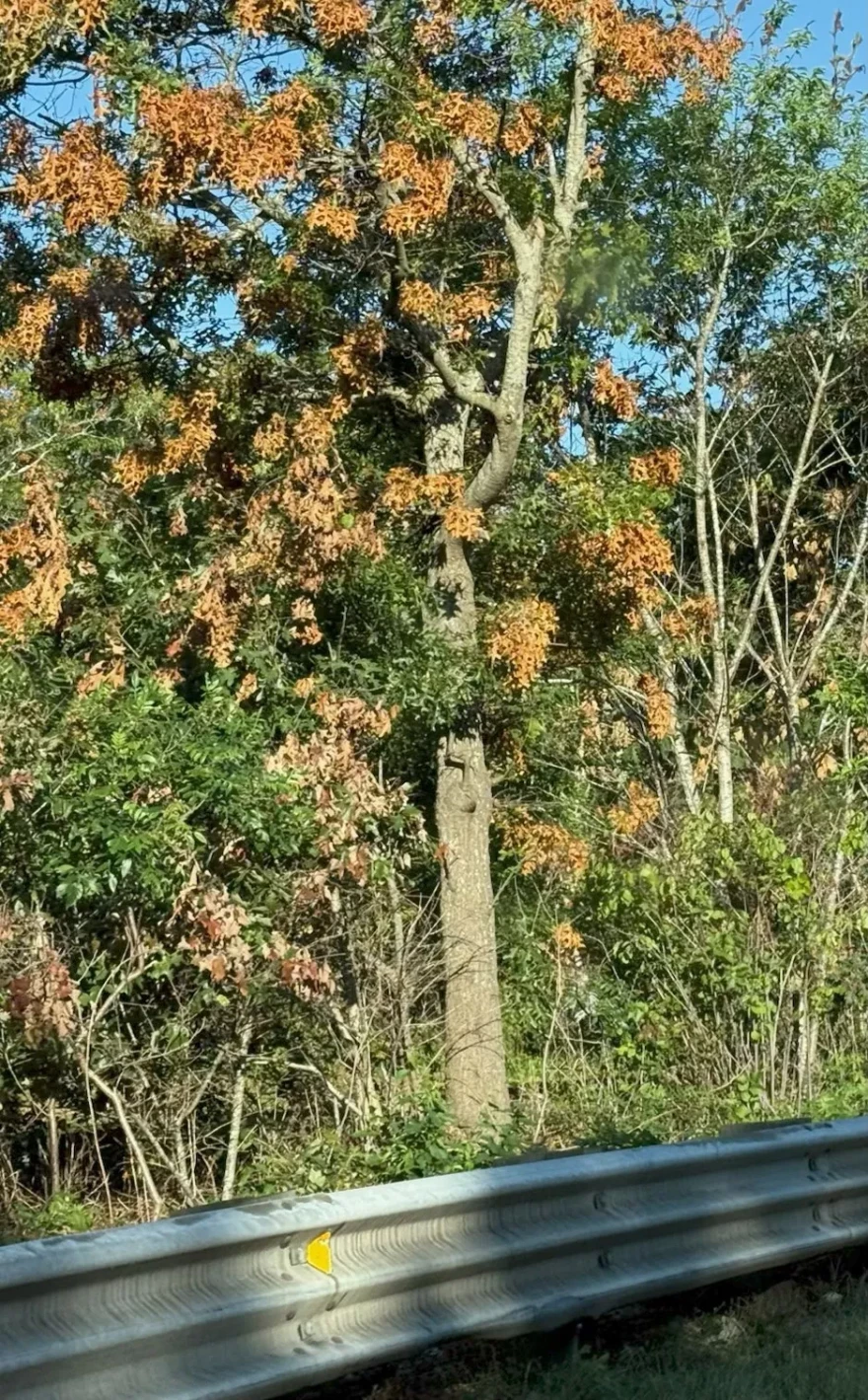Cicada nymphs make incisions, but trees hold up.
When oaks and maples browned bigtime this summer, that was far from normal, not a dry-weather response or isolated scenario. In the age of conspiracy theories (political and natural), deadly blights and fungus, rampaging bacteria and parasites were conjectured.
Dave Carpinella, manager of Mahoney’s Garden Center in Osterville, heard the concern and provided a solid answer:
“Cicadas. The 17-year cycle.”
Here’s what happened:
When this big batch of cicadas emerged, one of the first things they did was go about making sure the next big batch of cicadas would show in 17 years. Females searched out “the young branches of maples, fruit trees, and oaks,” reported Carpinella. This softer bark is enticing for cicadas to incise, making little slits in which to deposit eggs.
That stresses trees, leading to leaves browning and an overall sickly look. But the good news, Carpinella could report, is that the vast majority are not permanently damaged; they recover even though they don’t look good for a while.
Youngest trees and smaller shrubs are more vulnerable, and might need support by way of pruning, watering, or fertilizing. But they hold up too.
Cicada causation explains other things:
Evergreens, our common pines, did not experience this brown-out. Pine bark is thicker, more textured than young deciduous trees, and oozes sap; not conducive to cicada-slitting. Older boughs and trunks of oaks and maples also are tougher, generally spared.
Trees most affected are in areas where the ground hasn’t been disturbed; think sides of highways, public forests. That’s because cicada nymphs spend their years of dormancy attached to shallow roots, then emerge and climb to do their egg-inspired surgery. If the soil has been worked, many nymphs don’t make it.
Also encouraging, added Carpinella weeks ago, is “most of the damage that is going to happen has been done.” More trees discolored since the initial infestation, but not many. Hatched cicada nymphs have worked their way down to shallow roots to begin the long cycle once more, and there is a chance they can stress young trees, but minimal.
“The drama has already occurred,” Carpinella concluded, well before Labor Day.
In the context of plagues, blights, epidemics, and die-offs, cicadas created a serious scare but mostly embodied a benign invasion:
Brown — but not down.



